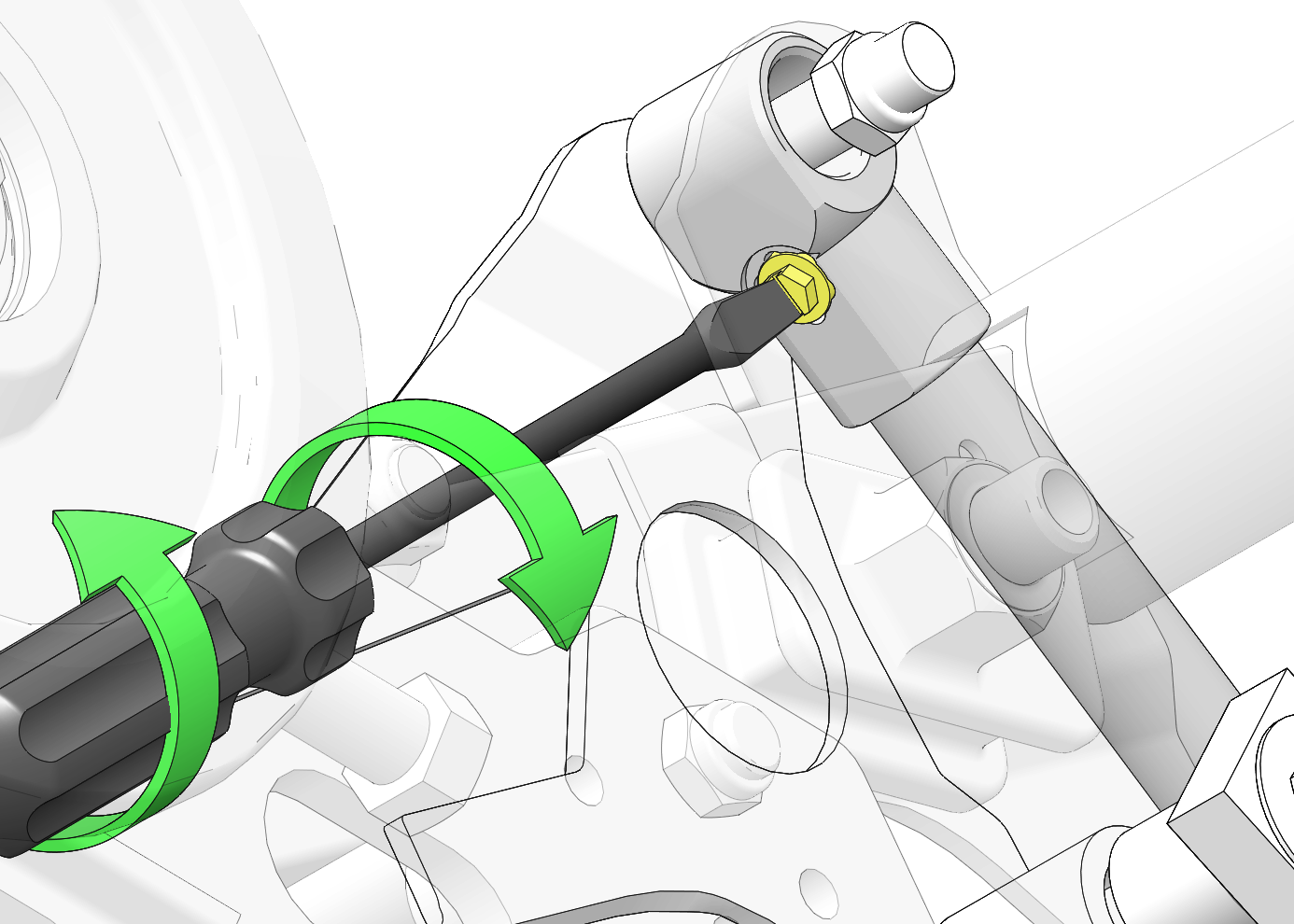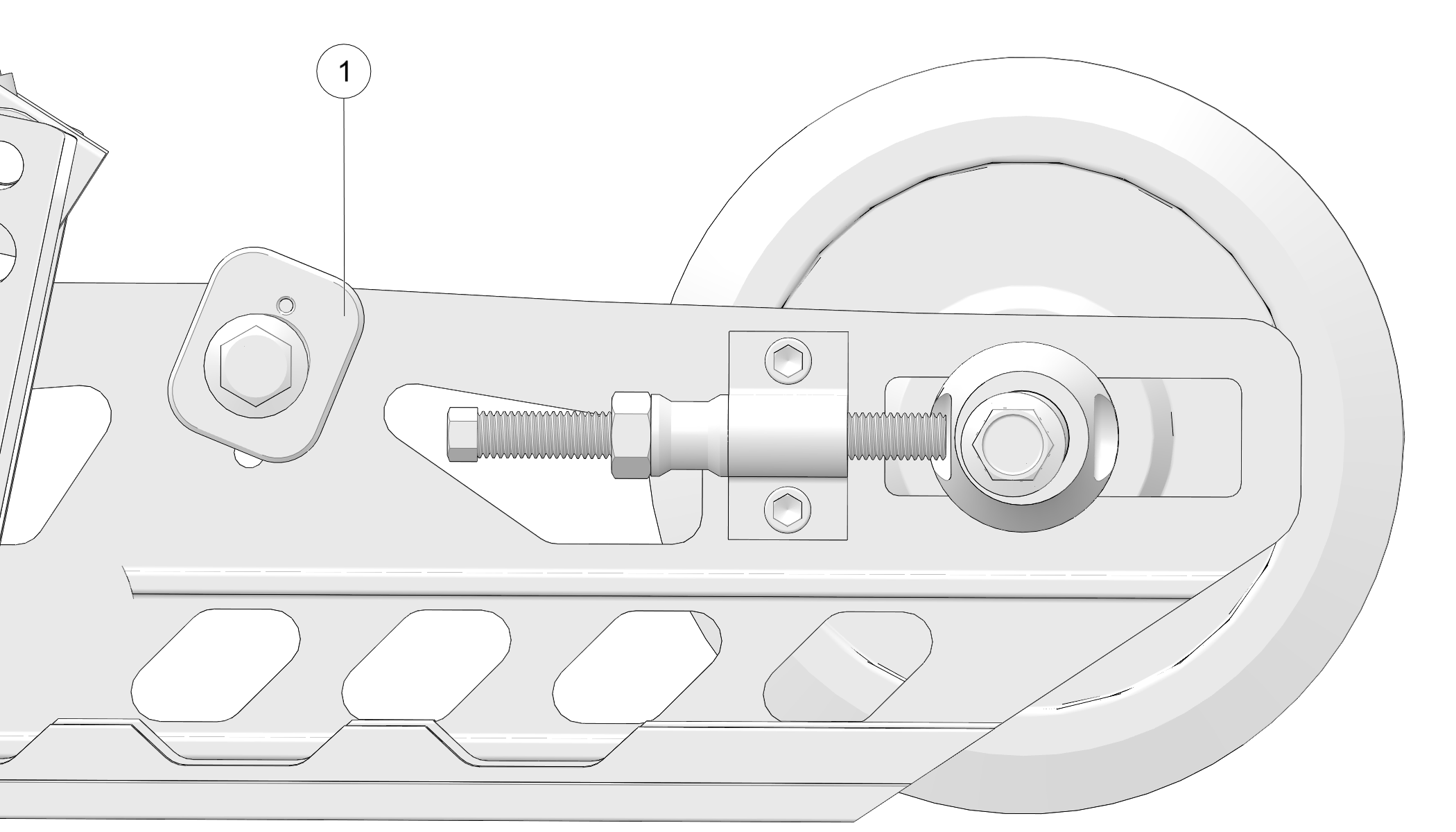The preferred
method for controlling weight transfer during acceleration is by adjusting
the rear rear scissor stop. Use the
scissor stop tool located in your tool kit it
make the adjustments.
To decrease
weight transfer under acceleration (for improved cornering), rotate
the stop to a higher position.
To increase
weight transfer or ski lift during acceleration, move the stop to
the rearward upper position. The stop may also
be rotated to a lower position for even more
weight transfer if desired.
Low Position — This setting will
increase weight transfer
Medium Position — This setting
is the production setting and will provide the best overall trail
riding
High Position — This setting
will decrease weight transfer
Rearward Upper Position (optional
hole location) — This setting will increase weight transfer
The preferred
method for controlling weight transfer during acceleration is by adjusting
the rear rear scissor stop (RRSS)

. The factory setting
is the best for most trail riding conditions.
To decrease
weight transfer under acceleration (for improved cornering), rotate
the RRSS to a higher position.
To increase
weight transfer or ski lift during acceleration, rotate the RRSS to
a lower position.
| TIP |
| Your dealer can help you with initial setup and additional setup
instructions to help you achieve your optimum ride. A scissor
stop tool is also available
from your dealer. |


